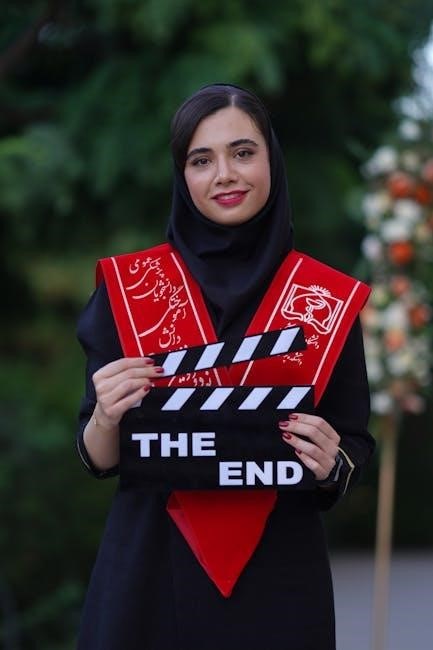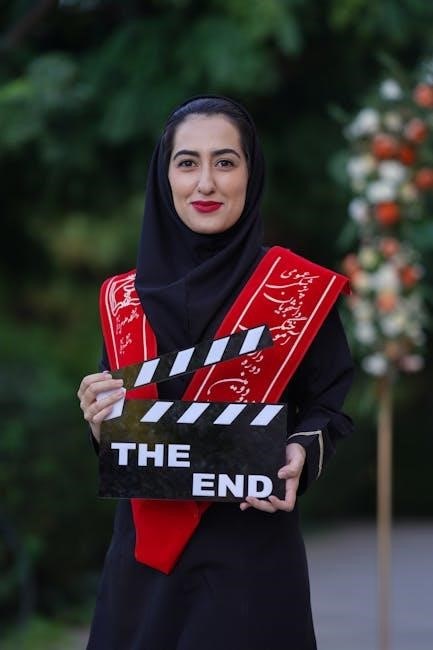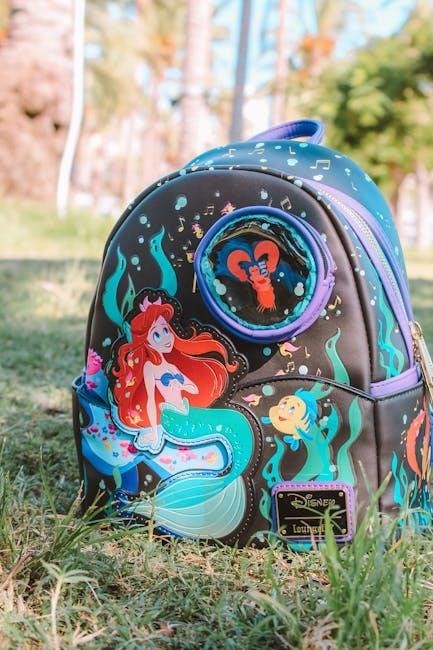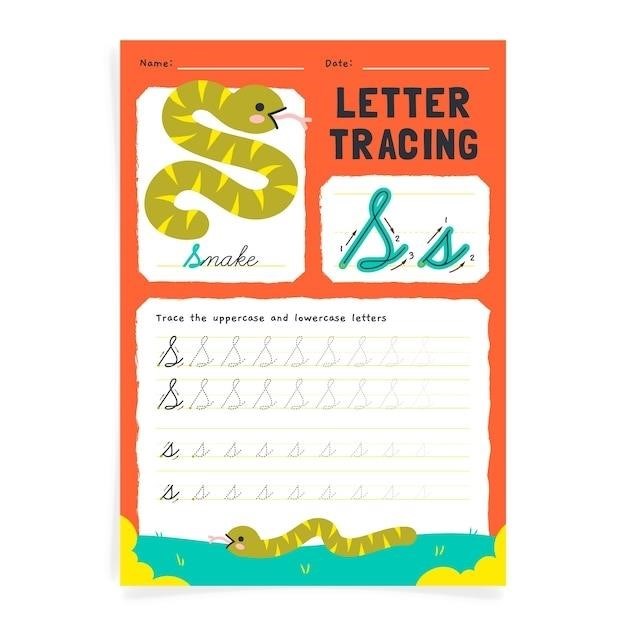The Cuban Missile Crisis was a pivotal Cold War event, and the movie Thirteen Days offers insights into its tensions and resolution strategies.
Overview of the Cuban Missile Crisis
The Cuban Missile Crisis was a 13-day confrontation in October 1962 between the United States and the Soviet Union over Soviet missile sites in Cuba. It brought the world to the brink of nuclear war. The crisis began when U.S. spy planes detected missile sites under construction in Cuba, just 90 miles from Florida. President Kennedy and his advisors debated military strikes or a naval quarantine. The movie Thirteen Days captures this tense period, focusing on decision-making and diplomacy. Educational resources, like detailed worksheets, help students analyze the crisis, its key players, and its resolution through a U.S.-Soviet agreement to dismantle the missiles. This event remains a critical lesson in Cold War diplomacy and crisis management.
Historical Context of the Crisis
The Cuban Missile Crisis occurred during the Cold War, a period of intense U.S.-Soviet tension. In 1962, Soviet missiles in Cuba threatened the United States, escalating fears of nuclear war. The crisis was fueled by prior events, including the failed Bay of Pigs invasion and the Soviet Union’s desire to counter U.S. missile sites in Turkey. The movie Thirteen Days highlights the political and military pressures faced by leaders during this time. Educational resources, such as worksheets and Q&A guides, help students understand the historical context, including the roles of Kennedy, Khrushchev, and Cuba’s Fidel Castro. These materials emphasize the crisis’s global impact and its lessons for diplomacy.
Key Players Involved in the Crisis
The Cuban Missile Crisis involved several pivotal figures, including U.S. President John F. Kennedy, Soviet Premier Nikita Khrushchev, and Cuban leader Fidel Castro. In the movie Thirteen Days, President Kennedy navigates the crisis with his brother Robert F. Kennedy and advisors like Kenny O’Donnell. These leaders faced immense pressure to avoid nuclear war. Educational resources, such as Q&A worksheets, highlight their roles and decisions. The crisis also involved diplomats and military leaders, showcasing the complexities of Cold War geopolitics. These key players’ actions and negotiations were critical in resolving the standoff, as depicted in the film and analyzed in study materials. Their decisions shaped global history and remain a focus of educational discussions.

Plot Summary of Thirteen Days
The film Thirteen Days recounts the 1962 Cuban Missile Crisis, focusing on President John F. Kennedy and his advisors as they navigate a 13-day standoff with the Soviets.
Main Plot of the Movie
The movie Thirteen Days dramatizes the 1962 Cuban Missile Crisis, focusing on President John F. Kennedy and his advisors as they confront the threat of nuclear war. The film opens with the discovery of Soviet missile sites in Cuba, escalating tensions between the U.S. and the USSR. Kennedy, played by Bruce Greenwood, must decide between a military invasion or a naval quarantine to prevent further escalation. The plot explores the intense deliberations in the Oval Office, highlighting the clash between hawkish generals and dovish advisors like Robert F. Kennedy. Key scenes depict the U-2 spy plane missions, the naval blockade, and the climactic negotiations leading to a resolution. The film emphasizes the human side of leadership under immense pressure, showcasing Kennedy’s strategic thinking and diplomacy.
Key Scenes and Their Significance
The movie Thirteen Days highlights several pivotal scenes that capture the intensity of the Cuban Missile Crisis. A key scene is the discovery of Soviet missile sites in Cuba, escalating global tensions. Another critical moment is the Oval Office debate, where advisors clash over military versus diplomatic solutions. The decision to impose a naval quarantine is portrayed as a high-stakes gamble to avoid invasion. A dramatic scene shows Kennedy’s leadership during a low point, emphasizing the human cost of failure. The resolution scene, where a deal is struck to remove the missiles, underscores the triumph of diplomacy. These scenes provide insight into the crisis’s complexity and the leadership required to resolve it, aligning with educational goals for students analyzing the film.

Major Characters in Thirteen Days
The film portrays key figures like President John F. Kennedy, Robert F. Kennedy, Kenny O’Donnell, and Adlai Stevenson, highlighting their roles and decisions during the crisis.

President John F. Kennedy
In Thirteen Days, President John F. Kennedy is portrayed as a calm and thoughtful leader during the Cuban Missile Crisis. His character emphasizes the importance of careful decision-making and diplomacy over haste. The film highlights his internal conflicts, balancing the advice of hawkish military leaders and dovish advisors. Kennedy’s leadership is central to the movie, showcasing his determination to avoid nuclear war while protecting American interests. His ability to navigate complex geopolitical tensions underscores his role as a pivotal figure in resolving the crisis. The film’s portrayal aligns with historical accounts, making it a valuable resource for understanding Kennedy’s leadership during this critical event.
Robert F. Kennedy
Robert F. Kennedy, portrayed as a key advisor to President John F. Kennedy, plays a central role in Thirteen Days. The film highlights his calm and reflective nature, as well as his ability to balance strong opinions within the administration. RFK emerges as a voice of reason, advocating for a middle-ground approach to the crisis. His relationship with the president is depicted as deeply trusting, with RFK often serving as a sounding board for JFK’s ideas. The movie also underscores RFK’s role in suggesting the naval quarantine, a pivotal decision that helped avoid direct confrontation with the Soviet Union. His leadership and diplomatic instincts are central to the film’s narrative, offering valuable insights into his character and contributions during the crisis.
Kenny O’Donnell
Kenny O’Donnell, portrayed by Kevin Costner in Thirteen Days, serves as a trusted advisor and special assistant to President John F. Kennedy. His character embodies loyalty and discretion, often acting as a bridge between the president and other key figures. O’Donnell’s role highlights his ability to navigate the complexities of the crisis while maintaining a deep understanding of the president’s priorities. The film depicts him as a pragmatic and influential figure, often providing a grounded perspective amidst intense debates. His interactions with Robert Kennedy and others underscore his importance in facilitating communication and strategy. O’Donnell’s character adds depth to the narrative, illustrating the human side of decision-making during the Cuban Missile Crisis.
Adlai Stevenson

Adlai Stevenson, as depicted in Thirteen Days, plays a pivotal role as the U.S. Ambassador to the United Nations. His character is portrayed as a calm and diplomatic figure who supports the Kennedy administration during the Cuban Missile Crisis. Stevenson’s most notable moment in the film is his presentation of photographic evidence to the UN Security Council, proving the presence of Soviet missiles in Cuba. This scene underscores his commitment to transparency and international diplomacy. Stevenson’s role highlights the importance of leveraging international platforms to garner support for the U.S. position. His calm demeanor and strategic thinking serve as a counterbalance to the heightened tensions of the crisis. Stevenson’s contributions are vital in shaping the diplomatic approach to resolving the conflict.

Themes and Messages in Thirteen Days
The film emphasizes leadership, diplomacy, and the clash between military and political solutions during the Cuban Missile Crisis.
Leadership and Decision-Making
The movie Thirteen Days highlights the critical role of leadership during the Cuban Missile Crisis, focusing on President Kennedy’s decision-making process. It portrays how Kennedy balanced advice from his advisors, weighing military action against diplomatic solutions. The film underscores the importance of resolve, communication, and strategic thinking in preventing a nuclear confrontation. By depicting tense deliberations in the White House, the movie illustrates the immense pressure on leaders to make life-altering decisions. The viewing worksheet on the crisis, featuring 30 questions, helps students analyze these leadership dynamics, encouraging reflection on how leaders navigate crises while maintaining global stability; This theme is central to understanding the human element of political decision-making.
Diplomacy and Negotiation
The film Thirteen Days emphasizes the significance of diplomacy and negotiation during the Cuban Missile Crisis. It portrays how back-channel communications and strategic dialogue were crucial in de-escalating tensions. President Kennedy and his advisors explored diplomatic options, such as a secret missile trade with Turkey, to avoid direct confrontation with the Soviet Union. The movie highlights the delicate balance between maintaining national pride and pursuing peaceful resolutions. A detailed viewing worksheet, featuring 30 questions, helps students analyze these diplomatic strategies, encouraging deeper understanding of how negotiations can prevent global conflict. This focus on diplomacy underscores the importance of dialogue in resolving international disputes.
Military vs. Diplomatic Solutions
The film Thirteen Days vividly portrays the clash between military and diplomatic approaches during the Cuban Missile Crisis. While some advisors pushed for a military invasion of Cuba, President Kennedy and his brother Robert advocated for a diplomatic resolution. The movie highlights the intense debates within the administration, showcasing the risks and consequences of both strategies. A detailed viewing worksheet, featuring 30 questions, helps students analyze these pivotal moments, emphasizing the importance of diplomacy in preventing nuclear war. The film underscores how Kennedy’s leadership balanced military preparedness with a commitment to dialogue, ultimately leading to a peaceful resolution. This theme remains a critical lesson in international relations.

Questions and Answers from Thirteen Days
A detailed worksheet with 30 questions helps students analyze key scenes and themes from the movie. It focuses on leadership, diplomacy, and crisis resolution strategies, providing a comprehensive understanding of the events portrayed in Thirteen Days.

This Q&A section provides a comprehensive guide to understanding the movie Thirteen Days and its historical context. Designed for educational purposes, it includes multiple-choice, true/false, and short-answer questions to test knowledge retention. Essay questions encourage deeper analysis of themes like leadership and diplomacy. The questions cover key scenes, character motivations, and the film’s portrayal of the Cuban Missile Crisis. A separate PDF version offers a printable format for easy use in classrooms or self-study. This resource is ideal for students and history enthusiasts seeking to engage critically with the film and its significance in Cold War history.
Multiple-Choice Questions
Test your understanding of the Thirteen Days movie and the Cuban Missile Crisis with these engaging multiple-choice questions. Each question addresses key events, characters, and themes, ensuring a thorough grasp of the film’s narrative and historical significance. Topics include the roles of President Kennedy and Robert Kennedy, the strategic decisions made during the crisis, and the film’s portrayal of diplomacy versus military action. Answers are provided in the accompanying PDF for easy reference. These questions are designed to reinforce learning and encourage critical thinking about the film’s depiction of one of the most tense periods in Cold War history.
True/False Questions
Assess your knowledge of the Thirteen Days movie with these true/false questions, designed to evaluate comprehension of key events and details. Questions focus on pivotal moments, character actions, and historical accuracy. For example: “True or False: President Kennedy immediately agreed to a military invasion of Cuba.” or “True or False: The film portrays Robert Kennedy as the primary advocate for diplomacy.” Answers are provided in the PDF to help learners verify their understanding. These questions cover scenes like the quarantine announcement, Adlai Stevenson’s UN presentation, and the final resolution. They ensure a deep engagement with the film’s narrative and themes.
Short Answer Questions
Engage deeply with the film through short answer questions that require concise yet detailed responses. These questions focus on specific scenes, character motivations, and historical context. For example: “Describe the role of Kenny O’Donnell in advising President Kennedy during the crisis” or “Explain the significance of the quarantine line around Cuba.” Students are encouraged to provide evidence-based answers, referencing dialogue, actions, and outcomes. The PDF includes answers to guide learning and ensure accuracy. These questions help assess understanding of the film’s portrayal of leadership, diplomacy, and the decision-making process during the Cuban Missile Crisis, fostering critical thinking and analysis.
Essay Questions
Evaluate the leadership styles of President Kennedy and his advisors during the Cuban Missile Crisis. How did their decisions impact the outcome? Analyze the role of diplomacy versus military action in resolving the crisis. Discuss the ethical dilemmas faced by the characters and their implications. Explain the significance of the quarantine line and its strategic importance. Compare the film’s portrayal of events with historical records. How does the movie depict the relationship between the Kennedy brothers? What message do you think the filmmakers conveyed about leadership under pressure? Support your arguments with specific scenes and dialogue from the film. These questions encourage in-depth analysis and critical thinking about the movie’s themes and historical context.

Analysis of the Movie’s Impact
The film “Thirteen Days” serves as an educational tool, enhancing historical awareness of the Cuban Missile Crisis. It provides insight into decision-making during critical Cold War events.
Historical Accuracy of the Film
The movie “Thirteen Days” strives to depict the Cuban Missile Crisis accurately but takes creative liberties. It captures the tension and high stakes of the crisis, such as the quarantine of Cuba and the EXCOMM meetings. However, some characters and events are dramatized for effect. For instance, Kenny O’Donnell’s role is exaggerated, and certain confrontations are fictionalized. The film also portrays Robert F. Kennedy’s opposition to a military invasion more prominently than historical records suggest. Despite these inaccuracies, it effectively conveys the gravity of the situation and the leadership dynamics during the crisis, making it a valuable educational resource for understanding the era.
Critical Reception of Thirteen Days
“Thirteen Days” received widespread critical acclaim for its gripping portrayal of the Cuban Missile Crisis. Critics praised the film’s tense atmosphere, strong performances, and historical relevance. Roger Donaldson’s direction was commended for capturing the intensity of the crisis. Bruce Greenwood and Kevin Costner were lauded for their portrayals of John F. Kennedy and Kenny O’Donnell, respectively. The film holds a high rating on platforms like Rotten Tomatoes, with many noting its ability to balance drama and historical accuracy. However, some critics argued that the film focused too narrowly on American perspectives, overlooking the broader international implications. Despite this, it remains a respected and engaging historical drama.

Educational Value of the Movie
“Thirteen Days” serves as a valuable educational tool for understanding the Cuban Missile Crisis. The film provides a detailed, dramatic depiction of the crisis, making it engaging for students and historians alike. It highlights key decision-making processes, the role of leadership, and the tension between diplomatic and military solutions. The movie is often used in classrooms to supplement historical texts, offering a visual and emotional connection to the events. It encourages critical thinking about crisis management and the ethical dilemmas faced by leaders. Additionally, it sparks discussions on the importance of diplomacy and the consequences of nuclear warfare, making it a powerful resource for educational purposes. The film’s historical accuracy and focus on real events enhance its educational relevance.
“Thirteen Days” offers a gripping portrayal of the Cuban Missile Crisis, emphasizing leadership, diplomacy, and the brink of nuclear war. It underscores the importance of strategic decision-making and the human element in historical events. This makes the film a valuable resource for understanding Cold War tensions and crisis management.
Final Thoughts on Thirteen Days
“Thirteen Days” provides a compelling narrative of the Cuban Missile Crisis, highlighting the tension, diplomacy, and leadership that shaped history. The film’s focus on decision-making and human emotion makes it a powerful educational tool. By exploring the perspectives of key figures like the Kennedys, it offers insight into the complexities of crisis management. The movie’s ability to balance drama with historical accuracy ensures its relevance for both students and history enthusiasts. Its themes of diplomacy over military action resonate deeply, reminding audiences of the importance of negotiation in preventing global catastrophe. “Thirteen Days” remains a significant resource for understanding this pivotal moment in Cold War history.
Importance of Studying the Cuban Missile Crisis
Studying the Cuban Missile Crisis is essential for understanding the dangers of nuclear conflict and the importance of diplomacy. It highlights how leadership decisions can shape global outcomes and demonstrates the value of crisis management. The crisis serves as a case study in international relations, revealing how geopolitical tensions can escalate. By analyzing the strategies and negotiations, students gain insights into conflict resolution and the delicate balance of power. The lessons learned from this event remain relevant today, emphasizing the need for dialogue and cooperation to prevent catastrophic outcomes. Understanding this history fosters a deeper appreciation for diplomacy and its role in maintaining global stability.


